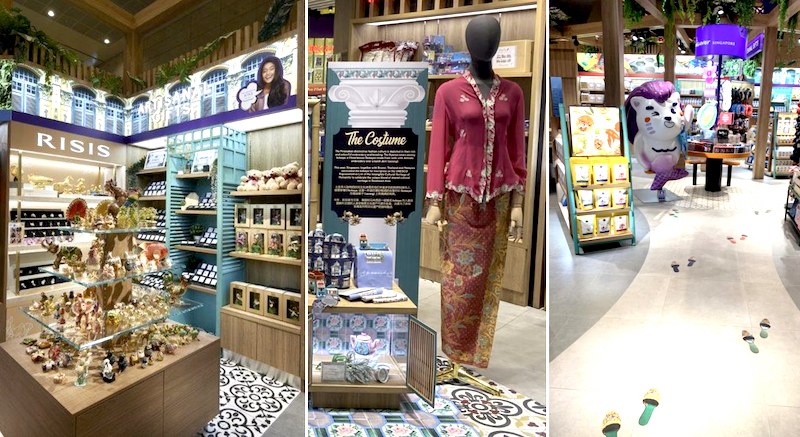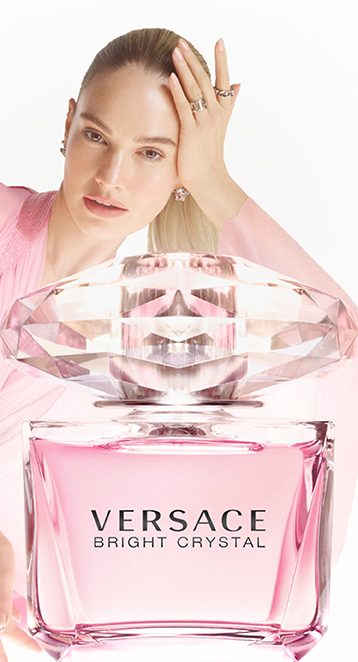
SINGAPORE. Lagardère Travel Retail brand Discover Singapore has partnered with The Intan, a local museum, to showcase Peranakan heritage at Singapore Changi Airport. The Celebrate All Things Peranakan campaign incorporates storytelling, visual merchandising animation and original Peranakan artefacts. [See below for more on the Peranakans.]
Travellers can also shop from Discover Singapore’s recently-launched Straits Peranakan range. It features porcelain sets, teas and sweets among other Peranakan-inspired souvenirs.

 Discover Singapore stores have been adorned with Peranakan-influenced design elements to celebrate the history of the Singapore Peranakans. The space showcases original artefacts from the early 1900s, courtesy of The Intan, amid an assortment of Peranakan-inspired creations.
Discover Singapore stores have been adorned with Peranakan-influenced design elements to celebrate the history of the Singapore Peranakans. The space showcases original artefacts from the early 1900s, courtesy of The Intan, amid an assortment of Peranakan-inspired creations.
WHO ARE THE PERANAKANS?
A Peranakan refers to a person of mixed Chinese and Malay/Indonesian heritage. Several Singapore Peranakans trace their origins to 15th century Malacca, where their ancestors were thought to be Chinese traders who married local women.
Peranakan men are known as baba, while the women are known as nyonya. From the second half of the 19th century to the mid-20th century, Peranakans were also known as the Straits Chinese, as they were born in the Straits Settlements. While some Peranakans have retained their cultural practices, many have now assimilated into the larger Chinese communities.
THE ARCHITECTURE
One of the key elements of the Celebrate All Things Peranakan campaign is the in-store design that highlights the cultural precincts, architecture and traditional ethnic motifs of the Peranakans. Different elements of Peranakan houses can be spotted at Discover Singapore, including Chinese carved-wood panels, louvre shutter-inspired wooden wall shelves, as well as detailed and vibrant tile motifs.
To further highlight Peranakan architectural style, a visual merchandising animation has been installed at the storefront. Its design reflects the traditional Peranakan home by incorporating details such as carved wooden swing doors known as pintu pagar.

TABLEWARE AND CUISINE
Peranakans are known for their porcelain tableware featuring hand-painted motifs such as phoenixes and peonies. Phoenixes are associated with femininity, marriage and grace, while peonies represent the importance of honour and virtue.
Day-to-day household utensils such as tiffin carriers (or commonly known as tingkat), plates, bowls, spoons, chopsticks, teapots and more are often accentuated with bright pastel shades. Some of the wealthy Peranakan families also customise their porcelain tableware by marking it with special motifs, names or surnames.

In line with their cultural heritage, Peranakan cuisine is rich with aromatic and spicy flavours, incorporating ingredients that reflect the culture’s hybridised roots. Popular desserts include cakes and cookies made with fragrant ingredients like gula melaka (palm sugar), coconut and pandan.

PERANAKAN COSTUME
Peranakan costumes have two distinctive features: embroidery and beadwork. The traditional costume worn by the ladies is called the kebaya – a fitted blouse made from voile featuring delicate embroidery – and it is worn over a batik skirt (or sarong). Peranakan fashion also encompasses hand-crafted accessories, bags and shoes made with intricate beadwork.

This year, Singapore, along with Brunei, Thailand and Malaysia, nominated the kebaya for inscription on the UNESCO Representative List of the Intangible Cultural Heritage of Humanity to celebrate Southeast Asia’s shared cultural heritage. This will also give recognition to the artisanal skills and socio-cultural values associated with the kebaya. ✈











